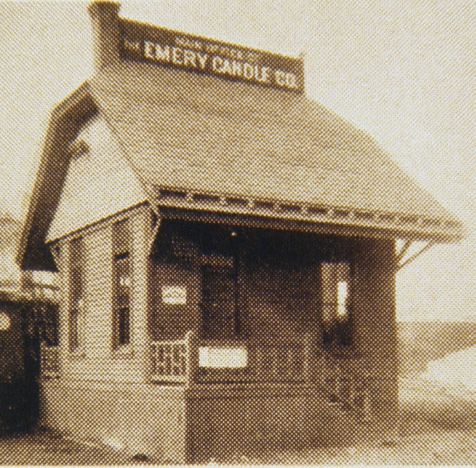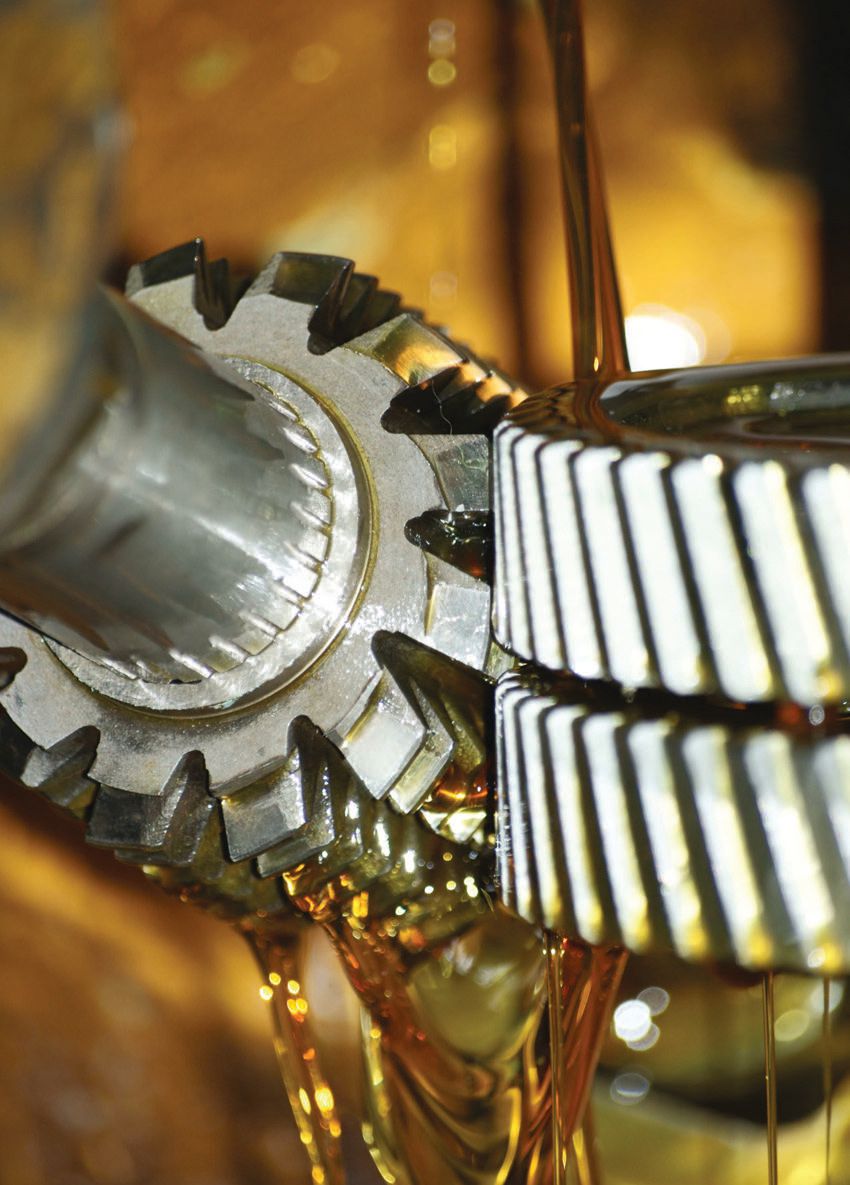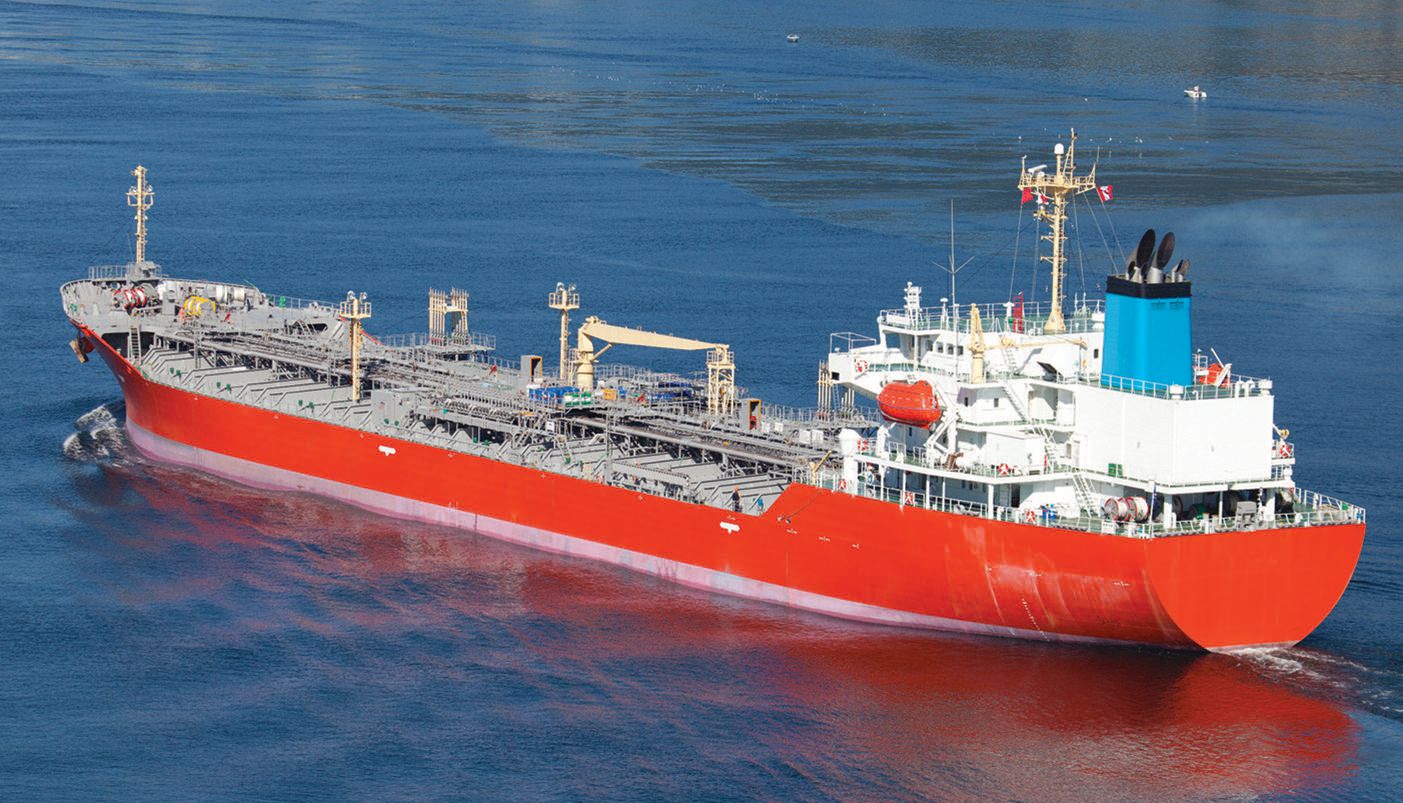Emery Oleochemicals
Accelerating Bio-based Lubricant Innovations
By Dr. Frank Bongardt, New Business Development and Marketing Manager Bio-Lubricants | TLT CMF Plus November 2015

175 years of history in manufacturing real-world solutions
Emery Oleochemicals’ unique history has its roots in Cincinnati in 1840, when it began as storefront selling candles and oils for lamps made from by-products of the meat processing industry. Before the end of the 19th century, the Emery Candle Company (as it was called then) was a thriving international business with a firm footing in North America and Europe through its sales of candles and chemicals. High quality products like Lily® stearic and Elaine oleic acids had become unmatched standards in the industry.
In the early 1900s, a new line of Twitchell Oils and lubrication products for natural and synthetic fibers were developed, becoming the early forerunners of today’s broad line of surfactants. The company would further its product line into the fields of plasticizers, synthetic lubricants and aroma chemicals backed by our proprietary ozone technology and new research lab built in the 1950s. Continued investments in research and innovation allowed growth in the transportation industry and by 1980s, its synthetic lubricants conquered the USA’s trucking industry with up to 85% of new heavy-duty trucks using its products.
 Pioneering natural-based lubricant solutions
Pioneering natural-based lubricant solutions
Following the startup of the company’s dimer acid plant in 1951, it was awarded (another) patent for this pioneering discovery which allowed us to establish a prominent position in ester synthetic basestocks. Innovations in this space resulted in fully compounded lubricants and greases for aviation, military, automotive, and industrial uses, providing a modern success story for Emery Oleochemicals.
Today, Emery Oleochemicals’ Bio-Lubricant business platform markets its renewable-based product line across three solution areas, namely Oilfield, Ozone and Dimer Acids, and Esters for lubricants.
Oilfield
For over 30 years, we have been providing our customers with tailor-made solutions for bore hole drilling. The portfolio consists of natural-based carrier fluids, emulsifiers, rheology modifiers, thinners, dispersants, lubricants suitable for water and oil-based muds, and cleaners for the removal of drilling muds.
Ozone and Dimer Acids
Oleic acid derived from animal or vegetable sources is split into azelaic acid (straight chain C9 dicarbxylic acid) and pelargonic acid (straight chain C9 mono fatty acid) by the addition of Ozone. The azelaic acid EMEROX® 1144 is widely used in the formulation of complex greases to generate higher dropping points and excellent heat stability. The water-soluble Triethanolamine salt of the azelaic acid based EMEROX® 1185 provides excellent steel corrosion protection at treat rates above 0.1 %.
Pelargonic acid EMEROX® 1202 is used in the synthesis of high temperature stable polyolesters as an alternative to coconut and palm kernel oil derived capric and caprylic acids and as anti-corrosion inhibitor compounds. Dimer fatty acids are produced by the dimerization of oleic fatty acid (C18) to give branched liquid dimer fatty acid (C 36, e.g. EMEROX® 2003) and is excellent as a corrosion inhibitor and basic component for fuel additives, amongst other applications. Approximately 40% of the dimerization by-products are monomer fatty acids which can be hydrogenated to branched liquid isostearic acids (EMERSOL® 3875). These are useful components for the synthesis of bio-degradable esters and the formulation of water emulsifiable corrosion inhibitors.
 Esters for Lubricants
Esters for Lubricants
Lube esters are earning positive marks as demand for environmentally responsible lubricants grow. In modern history, lube esters had a rather dubious beginning as they were first used by Germany in World War II in jet engine turbine technology. The launch of the first jet turbine specification MIL-L-23699, in the 1950s, paved the way for dramatic industry advancements, and in the 70’s, the first ester-based synthetic engine and gear oils for passenger cars were introduced to the marketplace. This led to longer drain intervals, longer engine life, and reduced maintenance costs.
Upcoming awareness of environmental concerns were leading to ester-based bio-hydraulics and mineral oil-free chain saw lubes in the 80’s. The 90’s would see new worldwide regulations with chlorinated hydrocarbon-free cold compressors coolants established. Chlorinated hydrocarbon had to be substituted by fluorinated hydrocarbons which were not compatible with standard mineral oil-based lubricant. New high polar polyolesters were solving this lubrication problem. Also in the 90’s, the first high viscous complex esters were introduced to high temperature chain fluids in the food industry.
The early 2000’s saw ester-based heavy duty truck formulations increase the drain intervals drastically to over 1,000,000 miles. Also, there were new opportunities for esters in base fluids for bio-marine fluids and additives for chlorinated paraffinic-free metalworking fluids.
Esters can be split into four groups: Mono, Di, Polyol, and Complex esters. They are made by the reaction of fatty acids with alcohols in the presence of a catalyst at temperatures of 180-240°C. This reaction is an equilibrium and controlled by the formation and removal of water, which explains why esters will always contain some remaining acid values.
Linear fatty acids from c-chain lengths of 8-18 carbons, and especially C 18 unsaturated (oleic fatty acid), are the most preferred starting materials to be reacted with monoalcohols (mostly branched) or polyols (e.g. Trimethylopropane, Pentaerythritol). For diesters and complex esters, dicarboxylic acids like adipic, sebacic, azelaic, and dimers are playing an important role.
 Why are esters of growing interest for the lubricant industry?
Why are esters of growing interest for the lubricant industry?
Belonging to Group V, esters are based mostly on renewable resources and offer environmentally responsible characteristics such as being readily bio-degradable (OECD 301 B min 60%), not bio-accumulative, non-toxic, and non-aquatoxic. Because of those properties, esters are the preferred group of basestocks for all environmentally critical applications. Besides this, esters have excellent rheological behaviors, extremely high viscosity indices, low evaporation losses, and are fully miscible with mineral oils. They are available in all kind of ISO VG classes and can fulfill extreme low and high temperatures, and oxidation demands.
Emery Oleochemicals’ ester portfolio contains unsaturated (working temperatures 60-120°C) and saturated products (working temperatures >120°C) for all important viscosity classes. The main purpose of the wide range of monoesters are components for chlorine-free metalworking fluids. The unsaturated hydrolytic stable types are working as anti-wear additives e.g. in water-based systems for steel or aluminum processing and the saturated types for neat oils in conjunction with sulfur carriers. Polyols and diesters with higher viscosity grades than monoesters are performing in bio and inflammable hydraulics, greases, engine, and gear oil formulations. The high viscous complex esters are shear stable polymers made of polyols esterified with mono and dicarboxylic acids. These act as high performance anti-wear additives in neat oils, thickeners in wind turbine, gear and transmission fluids.
Esters, the ideal performance partner for marine applications
In 2013, a new application for esters in marine fluids became an industry standard in complying with the vessel general permit (VGP, published by EPA –
Environmental
Protection
Agency). In the VGP regulation of oil and grease discharges, all ships navigating to US- harbors must use
Environmentally
Acceptable
Lubricants (EAL) with “oil to sea interface.” Ester base stocks became the solution of choice in fulfilling the environmental demands of VGP. Esters are available in all viscosity grades, are miscible with conventional fluids and, therefore, are applicable for low and high performance marine lubes. All of Emery Oleo chemicals’ esters in the Bio-Lubricant portfolio are VGP and EEL compliant (Lubricant Substance classification list – LUSC of the European Eco label).
Bio-based solutions, Emery Oleochemicals’ responsible way forward
Guided by an inventive spirit that go beyond providing high-performance solutions, we are able to help your business deal with the challenges of markets that are growing greener by the day. Our combined strengths in cutting-edge research and development, and in-depth technical know how allow us to push the boundaries of science and advance sustainable solutions enabling a better future by means of differentiated thinking. Uniquely packaged, we are dedicated to providing customers with best-in-class, bio-based products suited for lubricant formulations, derived from natural sources.